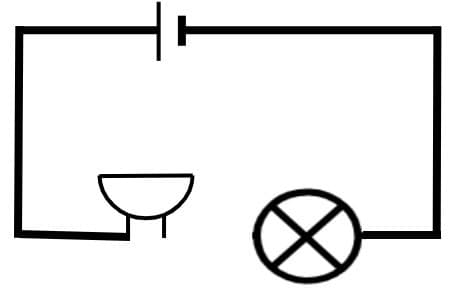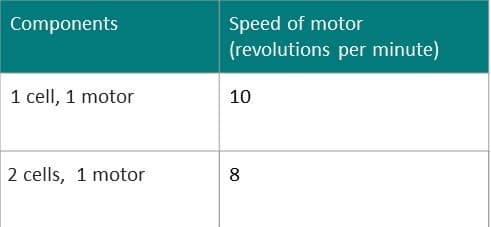Myths about teaching can hold you back
- Year 6
Changing the volume of buzzers
I can predict and test how to change the volume of buzzers in a circuit.
- Year 6
Changing the volume of buzzers
I can predict and test how to change the volume of buzzers in a circuit.
These resources will be removed by end of Summer Term 2025.
Switch to our new teaching resources now - designed by teachers and leading subject experts, and tested in classrooms.
These resources were created for remote use during the pandemic and are not designed for classroom teaching.
Lesson details
Key learning points
- Increasing the number and voltage of batteries increases the electrical push they provide.
- Test results help scientists to make predictions for further investigations.
- Sensors and data loggers can be used to make and record accurate measurements of light and sound.
- Scientists evaluate results to compare what was expected to what actually happened.
Keywords
Variables - A variable is something that can be changed, measured or kept the same in an investigation.
Component - A component is a device in a circuit that has a specific function.
Predict - To predict is to say what you think will happen.
Buzzer - A buzzer is a device in an electrical circuit which makes a noise.
Decibel - A decibel is a unit used to measure the volume of sound.
Common misconception
Children may not understand how variables interact within a circuit and how changes in one variable can affect others.
Teaching slides will relate the need to control variables in a fair test to the need to do so with circuits in order to be able to relate a given variable to a measured outcome.
To help you plan your year 6 science lesson on: Changing the volume of buzzers, download all teaching resources for free and adapt to suit your pupils' needs...
To help you plan your year 6 science lesson on: Changing the volume of buzzers, download all teaching resources for free and adapt to suit your pupils' needs.
The starter quiz will activate and check your pupils' prior knowledge, with versions available both with and without answers in PDF format.
We use learning cycles to break down learning into key concepts or ideas linked to the learning outcome. Each learning cycle features explanations with checks for understanding and practice tasks with feedback. All of this is found in our slide decks, ready for you to download and edit. The practice tasks are also available as printable worksheets and some lessons have additional materials with extra material you might need for teaching the lesson.
The assessment exit quiz will test your pupils' understanding of the key learning points.
Our video is a tool for planning, showing how other teachers might teach the lesson, offering helpful tips, modelled explanations and inspiration for your own delivery in the classroom. Plus, you can set it as homework or revision for pupils and keep their learning on track by sharing an online pupil version of this lesson.
Explore more key stage 2 science lessons from the Changing circuits unit, dive into the full primary science curriculum, or learn more about lesson planning.

Equipment
Equipment for simple circuits: cells, wires, buzzers, bulbs and equipment to measure the volume of a buzzers.
Content guidance
- Risk assessment required - equipment
Supervision
Adult supervision required
Licence
Prior knowledge starter quiz
6 Questions
Q1.Why won’t electricity flow around this circuit?

Q2.Which of these is a prediction?
Q3.Which of these does not affect the brightness of a bulb in a circuit?
Q4.The positive terminal of a has to be connected to the positive terminal of the cell or battery for it to work.
Q5.Match the action to the effect.
increased electrical push to the circuit
decreased electrical push to the circuit
Q6.Which of these would cause a bulb to get dimmer?
Assessment exit quiz
6 Questions
Q1.__________ the number and voltage of cells increases the electrical push they provide.
Q2.What can scientists use to help them make prediction?
Q3.Does this data support the prediction that adding cells to a circuit makes a motor spin faster?

Q4.Sensors and data __________ can be used to make and record accurate measurements of light and sound.



